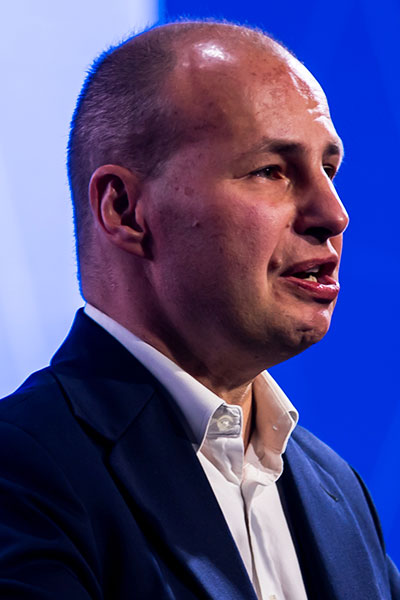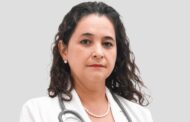Editor’s Note: This is the second of three articles summarizing highlights from the IASLC Award Lectureships presented during the 2023 World Conference on Lung Cancer. Find the first article here and look for the final article in the series in the coming weeks at ILCN.org.
Each year, the IASLC Lectureship Awards presentations during the World Conference on Lung Cancer feature renowned leaders in thoracic oncology, and this year was no exception. These awards recognize clinicians and investigators who have made significant contributions to the treatment of patients with lung cancer.
During WCLC 2023 in Singapore, these nine lectures took place during one dedicated plenary session on Sunday, September 10. Following is a summary of the highlights from three of the presentations. The session can also be viewed on-demand by registered attendees through December 31.
Return To Intended Oncologic Treatment

Jessica Donington, MD, Professor of Surgery and Chief of the Thoracic Surgery section at the University of Chicago, received the Robert J. Ginsberg Lectureship Award for Surgery. She prefaced her remarks with the reflection that spending 4 weeks as a visiting resident at Memorial Sloan Kettering Cancer Center under Dr. Ginsberg’s tutelage was a highlight of her training.
Dr. Donington said that the literature contains two definitions of “return to intended oncologic treatment after surgery” (RIOT), a concept first introduced in 2014 by a group of hepatic surgeons from MD Anderson. One is the number of days between surgery and the commencement of oncologic treatments. The second is the ratio of the number of patients for whom adjuvant therapy is recommended and those who complete it.
Dr. Donington noted with concern that recent lung cancer trials recorded significant patient attrition at each point in the treatment timeline. “Trial patients are healthy and motivated,” she said. “What does this attrition say about these therapies we’re using in our clinics?”
Surgeons can do more to promote the concept of RIOT as a quality metric within the profession, Dr. Donington said.
“We need to make RIOT a priority and track it in our databases and in our trials,” she said. “We must encourage our patients to complete their adjuvant therapies. Lung cancer is a systemic disease, and it takes more than good surgery to cure our patients.”
Radiation Oncology in Poland

Next, Rafal Dziadziuszko, MD, PhD, presented the James D. Cox Lectureship Award for Radiation Oncology. Dr. Dziadziuszko is head of the Department of Oncology and Radiotherapy at Medical University of Gdańsk, Poland.
Dr. Dziadziuszko began by summarizing the rapid improvements in radiation oncology seen in Poland in the past two decades. In 2005, the country contained 70 linear accelerators plus cobalt units (one for every 550,000 inhabitants) and treated approximately 40,000 patients per year. With only 28 radiotherapy centers, wait times were typically 1 to 2 months and reimbursement remained limited.
In 2022, Poland contained 172 modern linear accelerators (one for every 220,000 inhabitants), operating across 52 centers, Dr. Dziadziuszko said. Approximately 100,000 patients were treated that year, and average wait times had decreased to 2 weeks. Reimbursement now reflects the costs of services. A comprehensive national training program for radiation oncologists and medical physicists has led to a three-fold increase in the number of specialists.
These improvements came about due to a country-wide initiative to improve radiation oncology that began in 2006, Dr. Dziadziuszko said. Improvements included developing a national radiation therapy equipment budget, as well as a comprehensive plan for building public radiation therapy infrastructure. The plan considered cancer incidence and the availability of systemic cancer treatments. It limited the distance between radiation oncology centers to a maximum distance of 60 kilometers, with centers with integrated cancer care receiving preference.
Biomarkers in Small Cell Lung Cancer

Next, Jie Wang, MD, Chair of the Chinese Academy of Medical Sciences and Chief Physician at Peking Union Medical College, Beijing, received the Heine H. Hansen Lectureship Award for Small Cell Lung Cancer (SCLC).
In the absence of biomarkers, SCLC has long been treated as a homogeneous disease without personalized treatment options, but that is changing.
Some promising potential biomarkers of SCLC are an area of active investigation, Dr. Wang said.
She explained that current molecular subtyping is based on transcriptomic sequencing. However, this is not yet a routine clinical application. Consistency of immunohistochemistry staining and RNA sequencing analysis for these subtype-related biomarkers need to be further investigated, she said.
Dr. Wang said the goal should be to establish a novel predictive model.
“Emerging molecular subtypes have distinct therapeutic vulnerabilities,” she said. “However, there are a great deal of challenges to the development of clinically feasible expression-based biomarkers and the necessary biomarker-driven clinical trials.”
Intratumoral heterogeneity and subtype switching during therapeutic progress are important contributors to resistance, Dr. Wang said, adding that combination therapeutic strategies are necessary.
“Blood‐based analysis may provide alternative opportunities to monitor the molecular phenotypes throughout the disease and to assess biomarkers of treatment response and prognosis,” she said.




